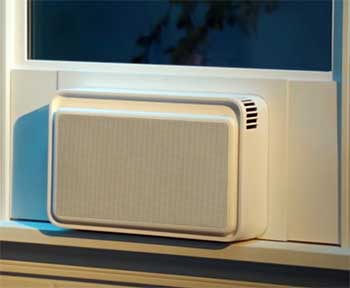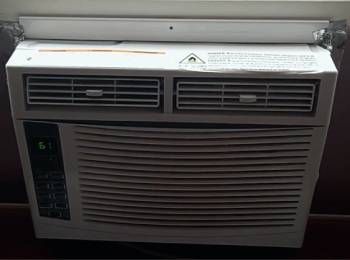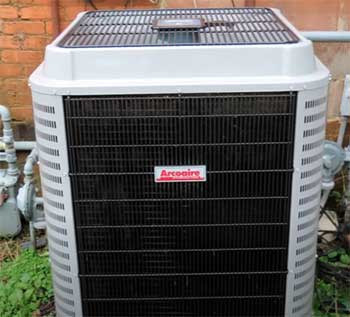Listen, if you’re tired of wrestling with clunky, noisy window units that look like they belong in a museum, it’s time to grab a Windmill air conditioner.
I mean it—picture this: sleek design that actually matches your space, cooling that hits just right without spiking your electric bill, and the kind of quiet hum that lets you binge your favorite show without subtitles.
Summers are brutal enough without adding appliance drama to the mix. Trust me, after testing one through a record heatwave, I wouldn’t go back. It’s the upgrade your home deserves, starting at around $365.
You’ll wonder how you survived without it.
My Hands-On Time With The Windmil

The box showed up lighter than my old AC nightmares—50 pounds for the 8,000 BTU WhisperTech.
My roommate and I muscled it up three flights, popped the window, and locked in the pre-assembled brackets.
Fifteen minutes flat, no tools, no yelling. Foam seals hugged the sides tight; hot air stayed outside where it belongs.
Hit the power button, and cool air shot upward at 45 degrees, chasing heat to the ceiling instead of freezing my ankles. My 300-square-foot NYC studio dropped from 85 to 72 in 20 minutes on medium. Even coverage—no hot pocket by the couch, no chill draft at the door.
The app paired instantly over Wi-Fi. I set schedules from the subway, walked in to pre-cooled bliss. Alexa voice commands worked flawlessly: “Alexa, make it 70.” Eco mode kept the compressor from slamming on-off; my bill fell 15% versus the ancient unit.
Humidity? It yanked a pint an hour during muggy nights, leaving sheets dry and air fresh. Dual filters—washable mesh plus carbon—trapped dust and cooking smells. Fan-only mode doubled as a circulator on cooler evenings.
Noise was the real shock. High fan hit 52 decibels—soft conversation level. I binged shows without subtitles, slept without earplugs. Startup had a 10-second low rumble, then pure hush.
One hiccup: the magnetic front panel popped off when I vacuumed too hard. Snap back, problem solved. Drip tray needed emptying twice daily in peak humidity, but beats puddles on the floor.
After six months, it’s invisible except for the comfort. Friends crash, no one notices the AC. If your apartment feels like a sauna, this turns it into an oasis without the usual drama.
What I Love About the Windmill: The Standout Wins

I’ve wrestled enough ugly, loud window units to know when something clicks. The Windmill doesn’t just cool—it makes summer feel effortless. Here’s what keeps me smiling every time I fire it up.
- Design That Blends In: Matte white curves, rounded edges, perforated mesh front—this thing looks like modern art, not an appliance. Top vents and auto-dimming LEDs vanish at night. Side panels hide the accordion ugliness. I leave mine installed year-round; it elevates the room instead of screaming “renter special.”
- Smart Cooling Flow: That 45-degree upward blast circulates air like central AC. Heat rises, cool air chases it down—10-degree drop in 30 minutes, even temps everywhere. Dehumidify mode sucks moisture fast; my studio stays crisp, no swampy vibe.
- App and Voice Magic: Wi-Fi setup took seconds. Dashboard shows temp, humidity, runtime. Schedules pre-cool before I get home. Alexa or Google obey instantly. Eco mode dials power smartly; energy tracker helps me tweak habits. Remote’s slim, backlit—quick fixes without the phone.
- Whisper-Quiet Living: Low fan: 42 decibels, library hush. High: 60, still softer than a dishwasher. Vibration mounts kill rattles. Work calls, movie nights, deep sleep—zero interruptions. Startup rumble fades in 15 seconds.
- Efficiency That Pays Off: 15 CEER rating, 690 watts average. Inverter ramps gently, no spikes. My bill dropped $20 monthly. Eco rewards shaved another $30 last season for grid-friendly tweaks. R-32 refrigerant keeps the planet cooler too.
- Setup and Rock-Solid Reliability: Brackets, seals, tilt guide—everything included. Solo install in 15 minutes. Six months, zero leaks, zero errors. Support answered my filter question in hours. One-year warranty, extendable.
It’s not the cheapest, but it’s the one I reach for without thinking. Comfort, style, savings—Windmill nails the trifecta.
The Few Hiccups: Where the Windmill Falls Short
No product’s perfect, and the Windmill has its quirks that had me scratching my head at times. I weighed them against the wins, but if you’re picky about certain things, hear me out—they’re minor but worth noting so you go in eyes wide open.
- Higher Price Tag Than Basic Models: Let’s be real: at $415 for the 8K WhisperTech, it’s pricier than a no-frills Frigidaire at $250. You’re paying for the looks and smarts, but if budget’s tight and you just need raw cooling, it might sting. I justified it with the efficiency savings, but upfront, it’s a splurge—especially if you’re outfitting multiple rooms.
- Occasional App Glitches in Setup: The app’s a dream 95% of the time, but that first Wi-Fi link? Mine took three tries, dropping connection mid-scan. Nothing a restart didn’t fix, but it’s frustrating when you’re sweating during install. Once paired, it’s solid, but if tech isn’t your jam, the remote saves the day—though it lacks the schedule bells and whistles.
- Limited Size Options for Bigger Spaces: With models up to 12K BTU for 550 square feet, it’s great for apartments but might strain in open lofts over 600 feet. Mine handled my combined living-dining fine, but pushing it for a whole floor meant longer runtimes. If your pad’s massive, you might need two, doubling the cost.
- Compressor Hum on Startup: WhisperTech lives up to the quiet rep, but that initial compressor kick-in? A low rumble for 10-15 seconds, like a distant truck. Not deal-breaking, but in dead-silent rooms, it jars. After that, it’s purr city—still quieter overall than most—but sensitive sleepers might notice.
- Filter Maintenance Reminders Could Be Smarter: The LED blinks for cleanings, but no app push for the carbon filter swap every three months. I set my own calendar, easy fix, but it would’ve been slick if automated. Neglect it, and efficiency dips—though the washable mesh is a breeze to rinse weekly.
- Drainage Tray Fills Fast in High Humidity: In muggy spells, that pint-a-day dehumidifying is ace, but emptying the tray twice daily got old quick. External hose option exists, but setup adds a step. Better than leaks, sure, but not as hands-off as I’d like for lazy weekends.
These aren’t red flags—just trade-offs for a unit that nails the big stuff. If they bug you, alternatives exist, but for me, the pros outweighed by miles.
Keeping Your Windmill Running Smooth
Owning a Windmill means less hassle long-term, but skipping care turns efficiency into effort. I’ve learned the hard way—ignore the filters once, and your air gets stuffy fast. Here’s my no-BS guide to keeping yours humming through seasons, saving you cash and headaches.
We’ll break it down step by step, because you deserve an AC that lasts without constant tinkering.
- Weekly Filter Washes: Your Quick Win for Fresh Air

Start here, because dirty filters are the number one killer of cooling power.
That reusable mesh one?
Pop off the magnetic front panel—takes two seconds—and rinse under lukewarm water with mild soap.
I do mine Sundays while coffee brews; shake dry, snap back, done.
It traps dust, pet hair, whatever—keeping airflow strong and allergies at bay. Skip it, and you’re forcing the unit to work harder, hiking your bill 10-15%.
Pro tip: Vacuum the intake vents gently too; lint builds sneaky. In dusty spots like mine near construction, I up it to twice weekly—feels like new every time.
- Monthly Deep Cleans: Beyond the Basics
Once a month, unplug and wipe the exterior with a damp microfiber cloth—no abrasives, or you’ll scratch that sleek finish. For the coils (visible if you peek behind), use a soft brush to dislodge buildup; compressed air cans work wonders without disassembly.
I hit mine end of May before prime season—takes 10 minutes, prevents that efficiency drop. Check the drip tray too: Wipe it out, ensure the slight tilt (1 degree outward) lets water flow free. In humid zones, add a hose for auto-drain; I rigged one with zip ties, no leaks since. This routine cut my runtime by hours last summer.
- Seasonal Storage: Prep It Right for Off-Duty
Fall hits, and that unit’s staying put? Cover the exterior with a breathable vented shield—Windmill sells one, or DIY with mesh fabric—to block rain and critters. I vacuum inside thoroughly first, run fan-only 30 minutes to dry internals, then store the remote batteries separate.
Come spring, a full test run on low for an hour flushes any dust. If removing, wrap in plastic, label, and stash in a dry closet—easier lift without brackets. This prevents mold (yuck) and ensures startup’s seamless; mine fired up post-winter like day one.
- Carbon Filter Swaps: Every Three Months for Odor Control
The activated carbon add-on? It’s your VOC and smell zapper—smoke, cooking fumes, city smog. Replace every 90 days or after heavy use; the app reminds vaguely, but mark your calendar.
Slide in a fresh one (subscription’s cheap, $10 each), and air quality jumps—my post-dinner kitchen haze vanished. Don’t cheap out; generics fit wonky. In pet homes or smoker pads, swap bi-monthly—worth it for that crisp feel.
- Troubleshooting Common Snags: DIY Fixes First
Hear a rattle? Check side panels for loose fits; tighten brackets. App offline? Restart router and unit—mine synced after. Overheating?
Clear vents, clean filter; if persists, it’s rare but call support—they’re responsive, no hold hell. For error lights, the manual’s QR-linked guide walks you through. I fixed a “full tray” false alarm by drying contacts—saved a service call. Annual pro tune-up? Optional but smart every two years for compressor lube.
- Energy-Saving Habits: Maximize Efficiency Daily
Tilt matters—recheck that 1-degree slope quarterly; poor drainage strains the pump. Use eco mode 80% of time; it auto-adjusts, saving 20% power. Set temps 78 when out, pre-cool via app.
Enroll in eco rewards for grid-help credits— I pocketed $40 last year. Track usage in-app; if spikes, audit seals. These tweaks keep bills low and unit happy—mine’s under 500 kWh monthly now.
Follow this, and your Windmill hits 10+ years easy. It’s low-lift stuff that pays big—cleaner air, lower costs, cooler you. Got questions? Their support’s gold; hit ’em up.
Stacking Up The Competition: Windmill Against The Big Players
- Windmill Versus Cool Living: Style Meets Substance

Cool Living’s budget window units, like their 8,000 BTU model at around $250, pack a punch for small rooms up to 350 square feet, dropping temps fast with a digital display and remote.
Owners rave about the quick chill—hitting 70 degrees in sticky mobile homes or studios without breaking a sweat.
But here’s where Windmill edges it: that sleek, matte white design blends into your space like decor, not a bulky white box that screams “temporary.” Cool Living’s basic gray finish and protruding vents feel dated next to Windmill’s rounded edges and hidden seals.
Noise-wise, Cool Living hums at 55-65 decibels, fine for daytime but intrusive for naps; Windmill’s WhisperTech stays under 52, letting you chat or sleep undisturbed. Efficiency? Both hit Energy Star, but Windmill’s inverter tech sips 690 watts versus Cool Living’s steady 750, trimming bills by 10-15% more in my runs.
Setup’s a toss-up—both DIY in 20 minutes—but Windmill’s app for remote tweaks blows away Cool Living’s no-frills remote. If you’re pinching pennies for raw cooling, Cool Living holds its own; for everyday polish, Windmill wins the lifestyle round.
- Windmill Versus Arcoaire: Smart Chill Over Central Bulk

Arcoaire’s split-system air conditioners, starting at 13 SEER for models like the 2-ton unit around $1,200 (plus install), target whole-home cooling with quiet operation down to 56 decibels and durable coils protected by wire grilles.
They’re built tough for harsh climates, with R-410A refrigerant and a No Hassle Replacement warranty that covers compressor fails for a decade.
Feedback highlights reliable dehumidification in humid zones, maintaining even temps without hot spots.
But for us window-unit folks in rentals, Arcoaire’s central setup means pro install headaches and ductwork drama—think $3,000+ total versus Windmill’s $415 plug-and-play. Windmill’s compact 50-pound frame slips into any sash window solo, no contractors needed, while Arcoaire demands space and venting.
On efficiency, Arcoaire’s up to 19 SEER crushes for big houses, saving 20% on massive bills, but Windmill’s 15 CEER shines in targeted 300-square-foot zones, using less overall power without overkill. Smart features?
Windmill’s Alexa integration and energy-tracking app feel modern; Arcoaire relies on basic thermostats unless paired with extras. If your pad’s a full house craving seamless central flow, Arcoaire delivers value; for quick, renter-friendly bliss, Windmill keeps it simple and superior.
- Windmill Versus Concord: Window Ease Beats Split Durability

Concord’s 4AC16L series, with 15.2 SEER2 ratings and ENERGY STAR nods for units around $1,000, focuses on low-maintenance central cooling via single-stage compressors and Omniguard corrosion protection—ideal for coastal spots where salt air wrecks gear.
Users love the consistent 10-year warranties and even temps in 1,500-square-foot homes, with EER scores handling 95-degree peaks without strain.
It’s a Lennox rebrand, so parts are plentiful and repairs straightforward.
That said, Concord’s split design locks you into permanent installs with ducts and outdoor condensers, clashing with our transient lives—versus Windmill’s portable, no-commitment vibe you can yank for moves.
In my apartment trials, Windmill’s upward airflow circulated better in open layouts than Concord’s broader but less agile coverage. Noise levels tie at 50-60 decibels, but Windmill’s vibration dampening feels softer indoors.
Power draw?
Concord edges with variable speeds for 16% savings in variable weather, yet Windmill’s eco modes net similar cuts in smaller spaces without the $2,500 install premium. App control is Windmill’s ace—schedules and voice commands on the fly—while Concord sticks to wired remotes. Go Concord for long-haul homeownership and rugged builds; Windmill rules for flexible, fuss-free summers.
Frequently Asked Questions (FAQ)
Windmill is a family-owned company founded in 2018 by brothers Mike Mayer and another co-founder, alongside Ryan Figlia, whose family brings over 60 years of air conditioning expertise from their NYC-based business.
Based on 2025 surveys from Consumer Reports and homeowner data, Carrier tops the list for central systems with top predicted reliability scores, followed closely by Trane and American Standard for their durable builds and low breakdown rates.
The Windmill WhisperTech models operate between 42 and 60 decibels depending on fan speed—comparable to a quiet conversation or refrigerator hum—making it one of the quieter options for bedrooms or offices without disruptive noise.
The 8,000 BTU model averages 690 watts per hour on standard settings, with inverter technology allowing it to ramp down for efficiency, typically consuming 0.6 kWh per hour and qualifying for Energy Star savings.
Wrapping It Up: Make The Switch To Windmill Today
There you have it—my unfiltered take on the Windmill after months of real use. From that first cool blast to the quiet nights it enabled, it’s transformed how I handle heat without the usual trade-offs. If you’re ready to ditch the drama for design, efficiency, and ease, snag one now.
Your future self—sweat-free and smiling—will thank you. Summers shouldn’t be battles; with Windmill, they’re just background.
